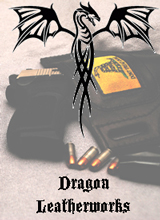Its sad that he died this way….
While heartbroken fans of Fast and Furious poster boy Paul Walker grieve over the actor’s gruesome death in a fatal Saturday car crash, high-performance automobile aficionados and industry experts have turned their attention to the car involved in the accident: A 2005 red Porsche Carrera GT.
he sleek Carrera GT’s appeal is obvious: It can reach a 60-mph sprint in a mere 3.8 seconds, and 100 mph in 6.9 seconds. But the car’s rear-mid engine design (meaning that the gas tank is located just in front of the passenger’s compartment—Walker was riding shotgun at the time of the accident) puts the car at an increased risk for a fatal crash and fire. ”The dangerous part is that it requires immense skill to drive, and is tremendously unforgiving,” says Doug DeMuro, a former manager at Porsche North America. He adds: “It’s hard to understand the car’s limits because it’s unlike virtually any other car on the road, and it’ll respond in ways other cars won’t.”
The Carrera GT is an insane super car, meaning that it has so much power that its easy to get overwhelmed and lose control. Still such an expensive and limited production car, such accidents are amazingly rare.
Still people want to blame the car, rather than the driver who went beyond where he should have gone.
Not a “Gun Death” at all!
H/T Wallphone



The weight distribution alone would make the car react differently. Knowing nothing else about the car, think about it from a physics standpoint: a car’s engine can weigh hundreds of pounds, while the gas tank can only balance that when it’s full to the top. In most cars, the weight is at the front, over the “steering” wheels – if you gun it, inertia will cause the effective center of gravity will shift backwards but still be towards the front of the vehicle, and the car will not be difficult to control. In the Carrera GT, the engine’s at the back – if you gun it, it’s a safe assumption the already rearward CoG will shift even more so, taking weight (read: traction) off the front wheels.
If it were me, that translates to, “Don’t gun it except on straightaways.”
Paul Walker was an experienced driver – I’ve heard people describe him as an expert. I expect he’d have known how this car handles. But, he wasn’t driving.
RIP, Paul.
That’s true once you’ve broke traction, but before that point your driving wheels will have more traction because they have more weight on them. On the flip side, you have a bigger advantage while braking. Braking forces are even stronger than acceleration, so a front engine car has practically no traction on the rear wheels under heavy braking (roughly 80/20). Mid engine is the way to go for performance/controllability. Actual rear engine (like the 911) is quirky with advantages and disadvantages. In any high HP car, gunning it in a corner is a really bad idea. Surely this driver knew what he was doing, and I bet the accident was the result of poor judgment in treating a public intersection (with oil and dirt) like a race track, as opposed to poor skills.
Anymore, people always want something to blame when something bad happens. This time, it’s the Carrera GT that’s taking the blame.
HELLO PEOPLE!!! Is supercar, is dangerous. It isn’t SUPPOSED to be as safe as your Volvo wagon. The people that buy these either know that, figure it out, or remove themselves from the gene pool in a rather expensive, extravagant manor.
Oh well, the nannies have bubble wrapped practically everything else. They might as well have at the Carrera GT too.
s